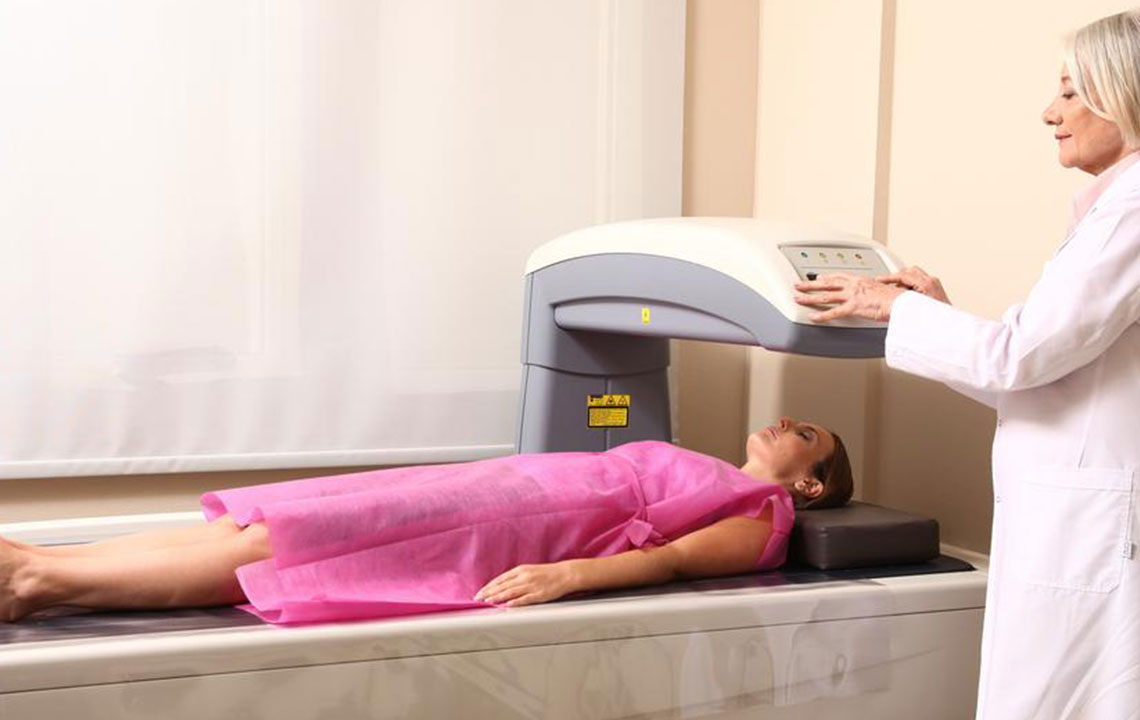3 Management Options for Osteopenia
Osteopenia is an early form of osteoporosis—a condition characterized by brittle bones. Osteopenia, however, causes low bone density, making bones weaker, but not to the point of being diagnosed with osteoporosis. In both cases, the body absorbs bone matter faster than it generates new bone matter. This makes the bones thinner and more prone to injuries and fractures. If left unchecked, the condition can progress to osteoporosis. So, it is important to manage it.

Management options
The goal of osteopenia treatment is to manage the symptoms and prevent it from progressing to osteoporosis. So, the management plan would usually include therapies, meal regimens, and remedies for strengthening the bones.
1. Prescription treatment
As the risk of breaking a bone is fairly low with osteopenia, there are no prescriptions involved unless the bone mineral density is quickly declining. Either way, a healthcare professional must be consulted to determine the most suitable remedies for keeping osteopenia in check.
2. Food-based changes
When dealing with the weakening of bones, the goal must be to increase their strength. One way to do this is by modifying meal plans to increase the intake of nutrients that improve bone mineral density. A few meal plan changes that can help here.
Increase calcium intake: The best calcium source for managing osteopenia is food. So, one should choose high-calcium foods like dairy-based products (low-fat milk, yogurt, and cheese), tofu, and green veggies (collard greens, spinach, and broccoli). Fish such as sardines and salmon are also good sources of calcium for managing osteopenia.
Choose foods rich in vitamin D: The best way to incorporate vitamin D is through exposure to early morning sunlight. Further, foods like whole grains, juices, yogurt, cereals, and dairy products fortified with vitamin D can be added to meals. In addition, fish liver oils, beef liver, and egg yolks are good sources of vitamin D.
Avoid caffeine: Beverages such as tea, coffee, and energy drinks contain a high level of caffeine. An excessive intake of caffeine can cause nervousness, insomnia, restlessness, increased heart rate, and nausea. All of this can make it difficult to manage osteopenia symptoms. So, when dealing with the condition, one should consider limiting caffeine intake.
3. Exercises
In addition to making better nutrition-based choices, a consistent exercise routine can also help in managing osteopenia. Like muscles, bones also need to be engaged to get stronger. Exercising for about 30 minutes every day can go a long way in strengthening the bones. Further, one can consult a physiotherapist or occupational therapist to get guidance regarding the best exercise routines for osteopenia management. Usually, load-bearing exercises that compel the body to work against gravity can help. Additionally, one can take up activities such as walking, swimming, cycling, dancing, and climbing stairs. Certain exercises could help in managing the symptoms and providing pain relief when dealing with osteopenia.
– Posture management through spinal alignment
– Balance training
– Leg strengthening exercises
– Spine and hip stretches
– Resistance band exercises
– Pushups
– Racket sports
One should avoid engaging in yoga and pilates, as this may involve twisting or rounding the spine. Such routines may put too much pressure on the vertebrae, increasing the risk of fracture when dealing with osteopenia. Further, before starting a new exercise, one should consult a doctor to avoid any injury and further complications of osteopenia. Also, while exercising, one should follow the necessary precautions to avoid falling or tripping, which can result in bone fracture or breakage. A physiotherapist can help one learn techniques and strategies to prevent falls while exercising and even while doing daily routine activities.
Risk factors to consider
Additionally, a crucial step toward early management is recognizing the factors that cause osteopenia and increase the risk of poor bone density. This can help one seek early management and prevent osteoporosis.
Age: Those above the age of 50 years with osteopenia are at a higher risk of developing osteoporosis.
Gender: Women who have undergone menopause may potentially develop osteoporosis earlier than men of similar age unless precautions are taken to improve osteopenia symptoms.
Poor nutritional choices: Unhealthy food choices such as high intake of unhealthy fats, fast foods, fried foods, and processed meats can increase cholesterol levels, blood pressure levels, and blood sugar levels. All of these can contribute to poor bone health and worsening osteopenia symptoms. Also, if daily meal plans are deficient in vitamin D and calcium, the risk of osteopenia turning into osteoporosis is higher.
Pre-existing health conditions: If one is already dealing with health conditions such as lupus, rheumatoid arthritis, and celiac disease along with osteopenia, the risk of osteoporosis is much higher.
If one believes they are at risk of osteopenia or osteoporosis, they should consult a doctor and seek remedies and physical therapy for managing osteopenia. One should also seek guidance regarding food-based changes and the best supplements for osteopenia to improve bone density.




